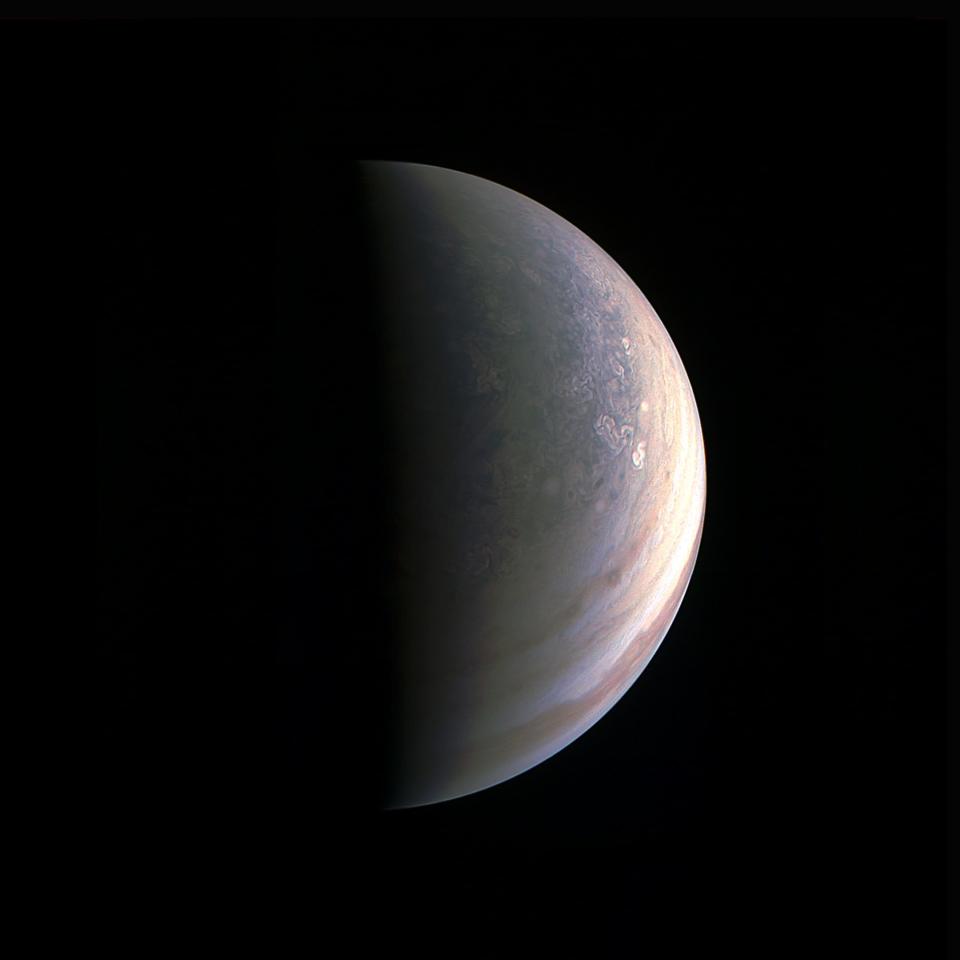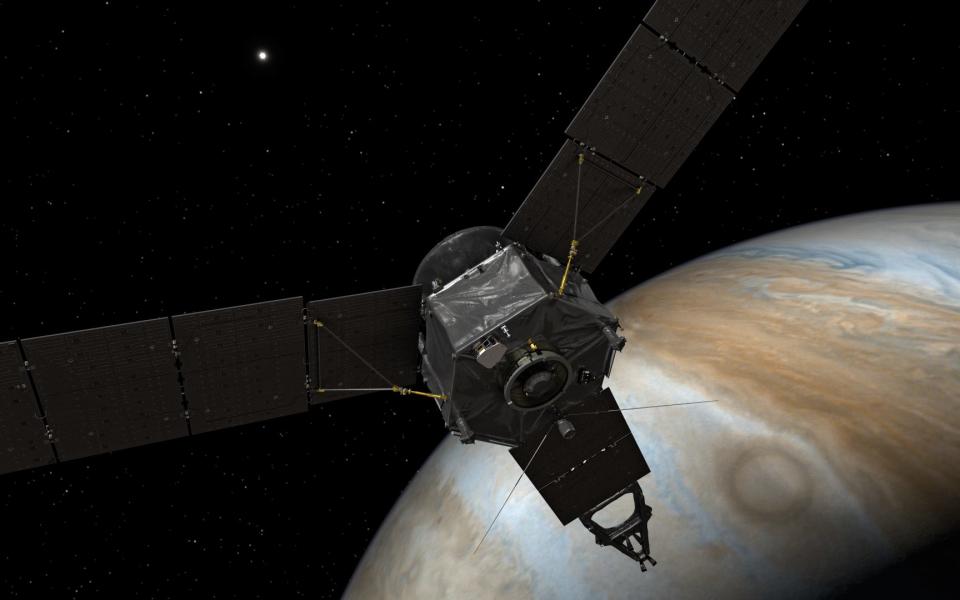Juno space probe captures stunning image of Jupiter's south pole
This NASA image shows an incredibly detailed picture of the surface of Jupiter taken by the Juno spacecraft.
It was taken on February 2, 2017 as the probe flew directly over Jupiter's south pole at an altitude of about 62,800 miles above the cloud tops.
However, plans to offer the device an even more detailed view of Jupiter's surface have been put on hold, after faulty helium valves in it's propulsion system meant it's lifespan would have been reduced its orbit period to just 14 days.
"The decision to forego the burn is the right thing to do -- preserving a valuable asset so that Juno can continue its exciting journey of discovery," Thomas Zurbuchen, associate administrator for NASA's Science Mission Directorate in Washington, said.
The incredible image was processed by citizen scientist John Landino, and the enhanced color version highlights the bright high clouds and numerous meandering oval storms.
The JunoCam instrument on the spacecraft sends massive amounts of data back to Earth for scientific study.
These data can be viewed and processed into images by anyone interested and many citizen scientists do just that.
Juno is already getting closer to Jupiter than any other probe in history.
During each orbit, it soars low over Jupiter's cloud tops -- as close as about 2,600 miles - probing beneath the cloud cover to learn more about the planet's origins, structure, atmosphere and magnetosphere.
Scott Bolton, Juno principal investigator, said: "Juno is providing spectacular results, and we are rewriting our ideas of how giant planets work”.
NASA's Juno mission to Jupiter has been in orbit around the gas giant since July 4, 2016, and takes 53 days to circumnavigate the gas giant.
Juno has successfully orbited Jupiter four times since arriving at the giant planet, with the most recent orbit completed on Feb. 2. Its next close flyby of Jupiter will be March 27.
"Juno is healthy, its science instruments are fully operational, and the data and images we've received are nothing short of amazing," Zurbuchen added.
Juno will continue to operate until at least July 2018, with further study dependant on securing funds.

 Yahoo News
Yahoo News 





